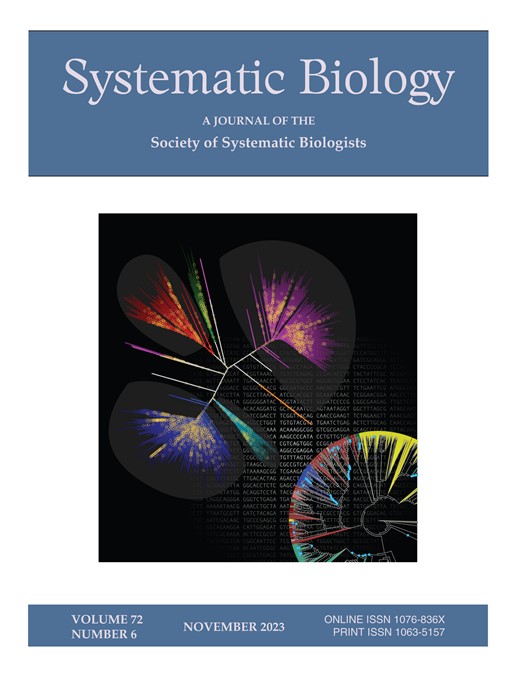Aquatic biotas of Sundaland are fragmented but not refugial
IF 5.7
1区 生物学
Q1 EVOLUTIONARY BIOLOGY
引用次数: 0
Abstract
Tropical insular systems have long attracted biologists, stimulating some important controversies in ecology and evolution. Eustatic fluctuations during the Pleistocene have been invoked to explain species dispersal and proliferation in these fragmented systems by controlling the extent of landmasses and their temporary connections. In ancient archipelagos, the Pleistocene represents only a small slice of their history so long-standing configurations might better explain insular diversity patterns. With a geological history of ca. 30 million years, the Sunda Shelf is old. Upon entering the Pleistocene, islands of the Sunda Shelf repeatedly separated and merged; however, recent reappraisals of its paleoenvironments and evolutionary dynamics have questioned their biogeographic significance. Based on the molecular inventory of six common freshwater fish families, we explored population fragmentation and demographic history of the most common species using mitochondrial DNA sequences. Species delimitation methods, applied to 1,062 sequences belonging to 37 species from 188 sites, detected 95 Molecular Operational Taxonomic Units (MOTUs). Among the nine most widespread species, the number of MOTUs ranged from 1 to 11, and correlated with time to the most recent common ancestor. Extended Bayesian Skyline Plots applied to mitogenomes and cytochrome c oxidase I sequences detected no variation in past effective population size within MOTUs, while hierarchical Approximate Bayesian Computation provided no evidence of congruent changes in effective population sizes. Fragmentation of an ancestral range is the most likely explanation for the rampant cryptic diversity observed, but demographic inferences do not support MOTUs as being refugial from an evolutionary perspective.巽他兰的水生生物是破碎的,但不是避难的
热带岛屿系统长期以来一直吸引着生物学家,在生态学和进化中引发了一些重要的争论。在更新世期间的涨落被用来解释物种在这些破碎系统中的扩散和增殖,通过控制大陆块的范围和它们的临时连接。在古老的群岛中,更新世只代表了它们历史的一小部分,因此长期存在的构造可能更好地解释岛屿的多样性模式。巽他陆架的地质历史大约有3000万年,它很古老。进入更新世后,巽他陆架的岛屿反复分离和合并;然而,最近对其古环境和进化动态的重新评估对其生物地理意义提出了质疑。基于6个常见淡水鱼科的分子清查,我们利用线粒体DNA序列探索了最常见物种的种群碎片化和人口统计学历史。物种划分方法应用于188个位点的37种1062条序列,检测到95个分子操作分类单元(motu)。在分布最广的9个物种中,motu的数量在1 ~ 11个之间,与最近共同祖先的时间相关。应用于有丝分裂基因组和细胞色素c氧化酶I序列的扩展贝叶斯天际线图检测到motu内过去的有效种群大小没有变化,而分层近似贝叶斯计算没有提供有效种群大小一致变化的证据。祖先范围的碎片化是观察到的猖獗的隐性多样性最可能的解释,但从进化的角度来看,人口统计学的推论并不支持motu是避难所。
本文章由计算机程序翻译,如有差异,请以英文原文为准。
求助全文
约1分钟内获得全文
求助全文
来源期刊

Systematic Biology
生物-进化生物学
CiteScore
13.00
自引率
7.70%
发文量
70
审稿时长
6-12 weeks
期刊介绍:
Systematic Biology is the bimonthly journal of the Society of Systematic Biologists. Papers for the journal are original contributions to the theory, principles, and methods of systematics as well as phylogeny, evolution, morphology, biogeography, paleontology, genetics, and the classification of all living things. A Points of View section offers a forum for discussion, while book reviews and announcements of general interest are also featured.
 求助内容:
求助内容: 应助结果提醒方式:
应助结果提醒方式:


